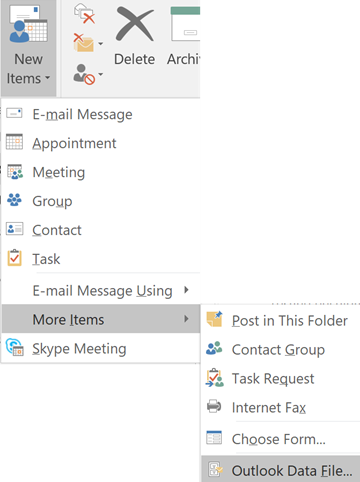
When you add an email account to Outlook, a local copy of your information is stored on your computer. This feature allows you to access your previously downloaded or synchronized email messages, calendar information, contacts, and tasks without an internet connection.
Certain types of accounts, such as POP accounts, store their information in Outlook Data Files (.pst files). Outlook 365 accounts, Exchange accounts, IMAP accounts, and Outlook.com accounts store their information in Offline Outlook Data Files (.ost files).

When you run Outlook for the first time, the necessary data files are created automatically.
Sometimes additional data files are needed. Outlook Data Files (.pst) are saved on your computer in the Documents\Outlook Files folder.
Tip: If your Outlook Data File (.pst) becomes large, it can slow down your OneDrive sync and may show "Processing changes" or "A file is in use". Learn How to remove an Outlook .pst data file from OneDrive.
Some accounts (IMAP, Microsoft Exchange Server, and Outlook.com) use an offline Outlook Data File (.ost). This is a synchronized copy of the messages saved on a server. It can be accessed from multiple devices and applications such as Outlook.
Offline Outlook Data Files are saved in the drive:\Users\user\AppData\Local\Microsoft\Outlook folder.
Tip: It isn't necessary to back up an offline Outlook Data File (.ost), because it's already a copy of the live information on the server. If you set up the account again or on another computer or device, a synchronized copy of your messages will be downloaded.